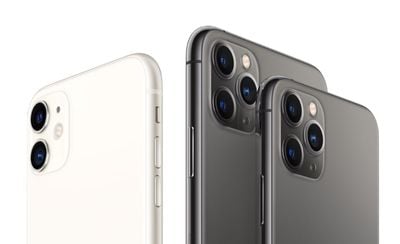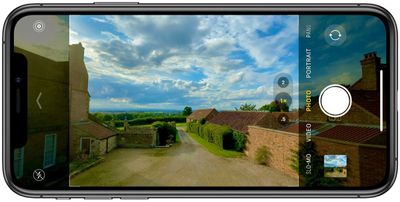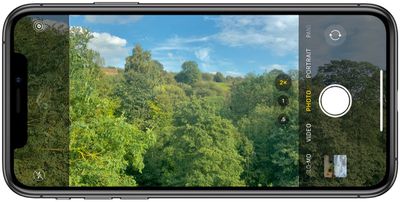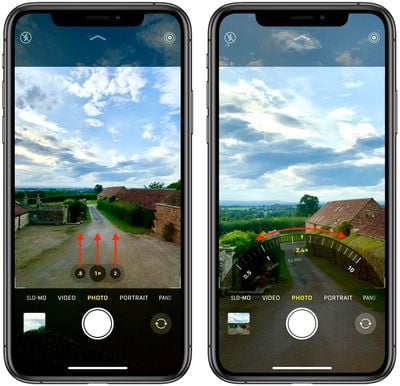The headline feature of Apple's 2019 iPhones is undoubtedly the new camera system, with the more affordable iPhone 11 boasting the same high-quality lenses as the iPhone 11 Pro and iPhone 11 Pro Max, with the exception of the third telephoto lens that's exclusive to the Pro models.

The standard wide camera on the iPhone 11 series offers the same 12 megapixels and f/1.8 aperture as on last year's iPhone XS devices, while the new 12 megapixel ultra-wide camera gets a f/2.4 lens. Apple has also widened the aperture of the telephoto lens on the Pro models to f/2.0 – an improvement over the f/2.4 lens found in the iPhone X and XS – which allows more light to hit the sensor and grab more detail.
Lens-Based Camera App Changes
Apple has also re-designed the camera system from the ground up to make the lenses work seamlessly in concert, and also radically improved the image processing technology. To accommodate these more advanced capabilities, Apple has given the stock Camera app a complete overhaul exclusively for its iPhone 11 series devices.

For example, when you shoot with the standard wide lens as shown above, the camera app interface becomes semi-transparent to reveal the ultra-wide camera's larger field of view, giving you a preview of what shooting with it would look like.
This immersive preview isn't limited to the wide and ultra-wide either: When using the telephoto lens on Pro devices, the Camera app will use the standard wide lens to fill in the additional area of the screen, as shown in the screenshot below. There's even an optional new camera feature that recruits the additional lenses and allows you to fix photo composition in post without having to resort to cropping.

Switching Between Ultra-Wide, Wide, and Telephoto
You can choose between the different lenses by tapping the numbered buttons at the bottom of the viewfinder: .5 is the new ultra-wide lens, 1x is the standard wide lens, and 2 is the telephoto lens (iPhone 11 Pro and Pro Max only).

At first glance, it looks as if these lens modes are fixed options. Far from it: If you swipe up on one of the buttons you'll see a radial zoom wheel enabling you to find a transition from camera to camera through a series of fine gradations.

Along the wheel you'll also see the 35mm equivalent focal length of each lens-sensor combination (the focal length you would need for a 35 mm film camera to obtain the same angle of view). The wheel disappears once you've chosen a custom focal length, and if you decide you want to return to the standard focal length, you can simply tap the center lens button.


















Top Rated Comments
However, for fully automatic cameras, digitally zooming in does have one advantage: the sensors (which calculate shutter/aperture, whether to use HDR or flash etc etc) are working solely on the portion of the image you're going to keep.
I think it would ultimately drive better iPhone photography in general as a result.
There’s also the use as binoculars. Sometimes it comes in handy when you want to check on something in the distance.